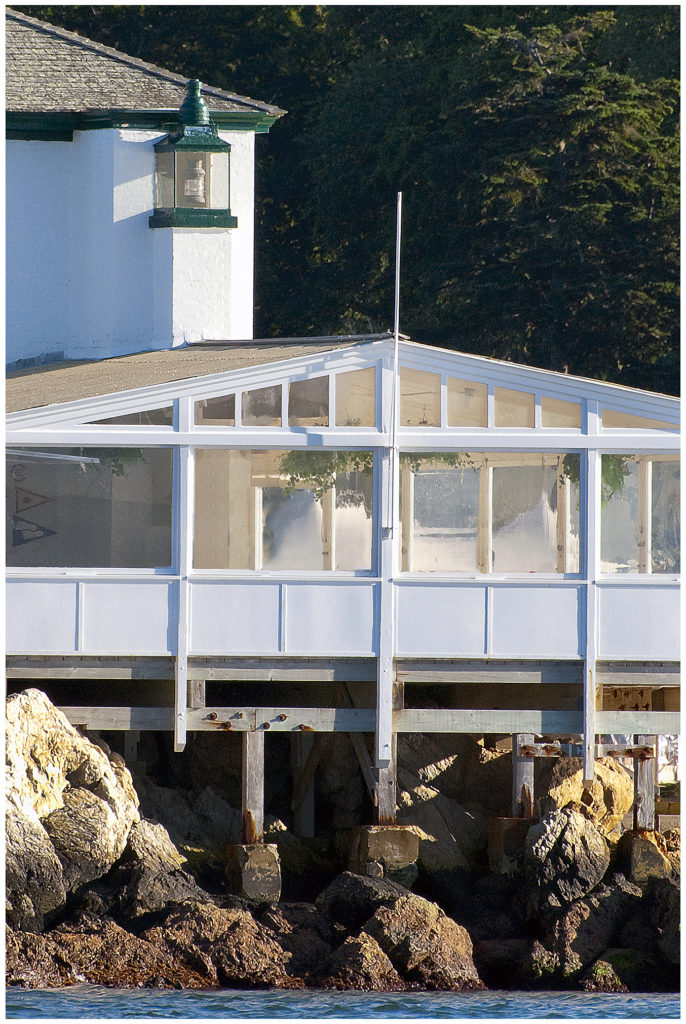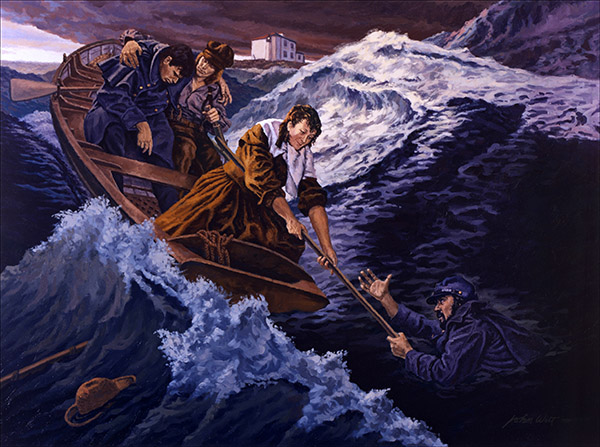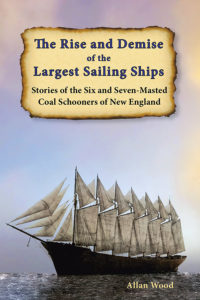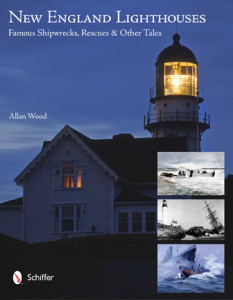Rhode Island’s Most Famous Teenage Heroine: Ida Lewis
Since Lime Rock was surrounded by water with a constant current, the only way to reach the mainland was by boat. In the mid-19th century, it was highly unusual for a woman to handle a boat, but Ida Lewis rowed her siblings to school every weekday and fetched needed supplies from the town. By 14, Ida had become known as Newport’s best swimmer and young rower. Her rowing skills, strength, and courage came into play many times during her life at Lime Rock and its lighthouse. She is credited officially with saving 23 lives during her 39 years at Lime Rock Lighthouse, but many believe the number may be closer to 35. However, Ida Lewis never kept records of her lifesaving experiences.
Idawalley Zoradia Lewis, named after her mother, was the oldest of four children. Ida’s father, Captain Hosea Lewis, was the Keeper of Lime Rock Lighthouse from 1857 until 1872. Her father found no keeper’s dwelling for his family, and within months, he started constructing a new building. By June 1858, the Lewis family moved into their new home at Lime Rock.
Only four months later, in October, Ida’s father suffered a stroke, which left him disabled. Ida’s mother was having trouble helping with tending the lighthouse as her youngest child had become seriously ill and was taking all her attention. As a result, the responsibility of keeping the light fell upon the shoulders of then 16-year-old Ida Lewis. She faithfully performed all the duties of running the lighthouse and found that she enjoyed the work, as hard as it was.
Ida’s first rescue was in the fall of 1858, as she was only a teenager. She watched from a window as one of four youths on a sailboat climbed the mast and began deliberately rocking the boat back and forth as a prank on his friends. The sailboat capsized, tossing the four youths into the water. Ida rushed to the scene in her small rowboat and hauled the four aboard, one by one, where they were taken to the lighthouse and recovered. Ida’s father saw the incident unfold from his chair and sighed in relief at his daughter’s efforts.
The four boys returned home without mentioning the incident to their parents. The incident received no attention then, as the boys were probably embarrassed. It wasn’t until eleven years later, as the boys reached adulthood, and only after Ida had performed more notable rescues, that the accident became known.
In February of 1866, three drunken soldiers were walking back to Fort Adams, located nearby on the mainland a short distance from Lime Rock. They decided to take a small boat belonging to one of Ida’s brothers as a shortcut to the fort. As they were heading towards the fort, one of the drunken men put his foot right through the floor. Two men slid into the icy waters into the current and were never seen again. Ida luckily spotted the third man as she rowed out to help. He was so drunk he could barely move from near drowning and was freezing from exposure.
When Ida reached the victim and struggled to pull the sizeable half-drowned man into her boat, she strained herself and could not get his limp body in the craft as he slipped into unconsciousness. She had to tie a line around his body and under his armpits and tow him to shore. She saw two other men along the shore and yelled for their help. They quickly obliged, and Ida was able to bring him safely to shore and revive him. Ida’s brother heard the commotion and brought warm blankets to the soldier who destroyed his boat. The man recovered and apologized to Ida’s brother, but the other two soldiers were swept out to sea. It took her many months to recover from the severe strain she received when trying to bring the drunken soldier into the boat.
On March 29, 1869, a gale raged outside the harbor area. Ida’s mother was upstairs and looked out the window to find a boat that had capsized with three soldiers in it. She yelled to Ida to quickly help the victims of the overturned craft as Ida rushed out the door without even taking the time to put her shoes on. She launched the lifeboat into the rising waves and proceeded towards the capsized sailboat. Before she could reach the boat, one of the soldiers had already slipped under the freezing waters while the others were clinging on for their lives. She steadied the lifeboat next to the struggling survivors and pulled each into the craft as the waves effortlessly tossed it around. Ida rowed with all her strength back to the safety of the lighthouse and got the freezing men into the kitchen. With their clothing dried and after they had rested from their ordeal, they made their way back to the fort. Colonel Henry Hunt heard of the incident and sent Ida Lewis his letter of appreciation with a contribution from the officers at the fort amounting to $218.
Ida had saved the lives of at least eight men by May of 1869. The boys and men who had been rescued previously were probably a little too embarrassed to admit that their lives had been saved by a lone girl in a small boat. Most people had not known about these rescues until later that same year when the grateful soldier saved in February of 1866 (when Ida had sprained herself in the attempt) told his story to the local press. A reporter from the New York Herald-Tribune read the story in the local newspaper and decided to write a feature article on Ida. She soon became a national hero when the magazines Harper’s Weekly, Leslie’s Weekly, Life, and Look engraved images of her in their publications. Because of this publicity, Ida received many awards, including medals, money, two musical pieces named after her, and other unique gifts.
On July 4, 1869, the residents of Newport presented Ida Lewis with a new mahogany boat called “Rescue,” complete with velvet cushions and gold-plated oarlocks. President Ulysses S. Grant even visited the 21-year-old Ida in 1869 to give his thanks. They had a long talk as she showed him around the lighthouse. Grant later remarked that his time with Ida Lewis was one of the most interesting events in his life. Over the years, many prominent notable pioneers like the Astors and the Vanderbilts visited her, as she had gained quite the celebrity status in the nation. She always remained very humble, feeling she was only doing her duty.
Ida Lewis Story Continues- Part 2: Ida Lewis the Later Years
Exploring Newport, Rhode Island
Newport is Rhode Island’s tourist capital, with waterfront concerts and events happening during summer. Visitors flock to the Newport Jazz Festival, the Newport Folk Festival, the Newport International Film Festival, the Newport International Boat Show, and plenty of other special events along the waterfront. Tourists from around the world visit Newport’s famous elaborate mansions of the rich and famous that shaped America’s 19th and 20th centuries. Although Ida Lewis (Lime Rock) light is not accessible to visitors as it is part of the Ida Lewis Yacht Club, you’ll also find other lighthouses nearby, like Newport Harbor Lighthouse, or you can take the Jamestown-Newport Ferry to Rose Island Light and explore the lighthouse and grounds there.
Enjoy your summer!
Allan Wood
Books to Explore
New England’s Haunted Lighthouses:
Ghostly Legends and Maritime Mysteries
Discover the mysteries of New England’s haunted lighthouses! Uncover ghostly tales of lingering keepers, victims of misfortune or local shipwrecks, lost souls, ghost ships, and more. Many of these accounts begin with actual historical events that later lead to unexplained incidents.
Immerse yourself in the tales associated with these iconic beacons!
The Rise and Demise of the Largest Sailing Ships:
Stories of the Six and Seven-Masted Coal Schooners of New England.
In the early 1900s, New England shipbuilders constructed the world’s largest sailing ships amid social and political reforms. These giants were the ten original six-masted coal schooners and one colossal seven-masted vessel, built to carry massive quantities of coal and building supplies and measured longer than a football field! This self-published book, balanced with plenty of color and vintage images, showcases the historical accounts that followed these mighty ships.
Available also from bookstores in paperback, hardcover, and as an eBook for all devices.

Book – Lighthouses and Coastal Attractions in Southern New England: Connecticut, Rhode Island, Massachusetts
Lighthouses and Coastal Attractions of Southern New England:
Connecticut, Rhode Island, and Massachusetts.
This 300-page book provides memorable human interest stories from each of the 92 lighthouses, including some rescues made by Ida Lewis of Lime Rock Light. You can explore plenty of indoor and outdoor coastal attractions, including whale-watching excursions, lighthouse tours, windjammer sailing tours, parks, museums, and even lighthouses where you can stay overnight. You’ll also find plenty of stories of hauntings around lighthouses.
Lighthouses and Coastal Attractions of Northern New England:
New Hampshire, Maine, and Vermont.
This 300-page book provides memorable human interest stories from each of the 76 lighthouses. It also describes and provides contact info for plenty of indoor and outdoor coastal attractions and tours. These include whale watching, lighthouse tours, unique parks, museums, and lighthouses where you can stay overnight. There are also stories of haunted lighthouses in these regions.
New England Lighthouses:
Famous Shipwrecks, Rescues & Other Tales
More details about Ida Lewis’s rescues at Lime Rock Light are included in this image-rich book, which also contains vintage images provided by the Coast Guard and various organizations and paintings by six famous Coast Guard artists.
You can purchase this book and the lighthouse tourism books from the publisher Schiffer Books or in many fine bookstores such as Barnes and Noble.
Copyright © Allan Wood Photography; do not reproduce without permission. All rights reserved.
Join, Learn, and Support The American Lighthouse Foundation








